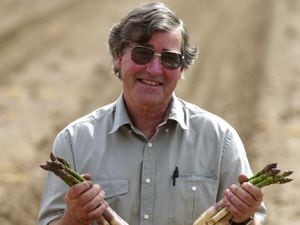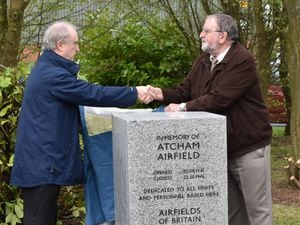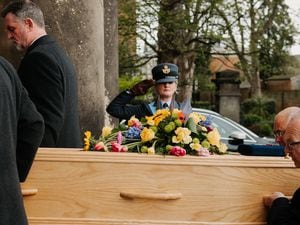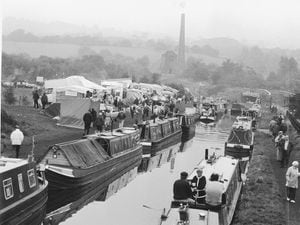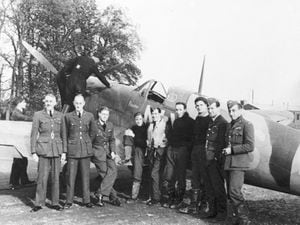Clues dug up on second RAF Cosford runway map
We've landed some big clues in our quest for an explanation of the mysterious "second runway" at RAF Cosford marked on a 1950s plan.
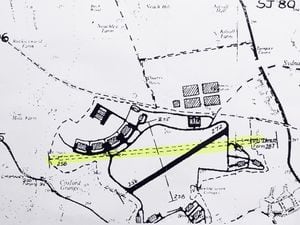
Wolverhampton aviation historian Stephen King sought our help in getting to the bottom of the puzzle after coming across what appears to be a temporary runway – about double the length of the existing runway – cutting across the airfield in an old layout.
And now Pat Dyer, a retired Flight Lieutenant who was the senior air traffic control officer at RAF Cosford from around 1984 to 1987, thinks he has a potential answer.
"While I was there we found that the airfield surface was quite bumpy for gliders to land on. So they dug all the surface up and flattened it," says Pat, from Shrewsbury.
However, unexpected problems arose, so he investigated with his metal detector.
"I found that what you would call pig netting had been used all over the airfield, stuck down with 3ft long stakes. The trouble was that they had sunk over the years and the head of the posts were about nine inches below the surface. I said to the contractor there's an awful lot of bare metal there. He didn't believe me."
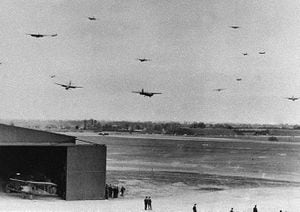
Pat says the metal netting would have had a similar purpose to PSP (pierced steel planking) or Sommerfeld tracking, which were both wartime methods of creating airfields on grass surfaces.
"It would have been either extra parking for aircraft on the grass, or been an actual runway. I suspect it was the runway you are looking for.
"It was probably to copy the Americans. When they came here during the war they built long single runway airfields aligned from south west to north east, so they landed into the prevailing wind."
The metal sunk below the surface created a major headache for the contractor.
"He dug up an enormous amount of this metal all over the airfield, and had it on the side of the airfield in an enormous pile. The contractor moaned to me that he hadn't made any money out of it. I presume it was taken away by a scrap dealer.
"He also found the underground brick works at the base of what had been an old anti-aircraft gun pit. That was below the surface as well."
Georgina Shepherd, of Wheaton Aston, also got in touch, saying: "My father Kenneth White worked as an aircraft engineer from the early 1950s and was familiar with the airfield and its layout.
"Part of the work undertaken at the airfield at the time involved storage, and later dismantling of Horsa gliders, which included moving the gliders around the airfield to various hangars. At no time did my father ever mention another runway.
"Additionally, my uncle, Harold Plunkett, and my cousin June Plunkett worked at RAF Cosford from about 1948. My uncle worked in stores and supplies and my cousin worked in a clerical position and they were never aware of an additional runway, a fact my cousin confirmed a few days ago when I visited her in Exmouth, where she now lives.
"My family, when moving from London for work at RAF Cosford, lived on the RAF estate on the north side of Albrighton, off Bowling Green Lane. A large proportion of occupants on the estate worked in a civilian capacity at the camp or airfield.
"In the 1950s, the children of Albrighton, when we progressed to secondary education either went to Shifnal Secondary Modern or Wellington Grammar schools. We travelled by train.
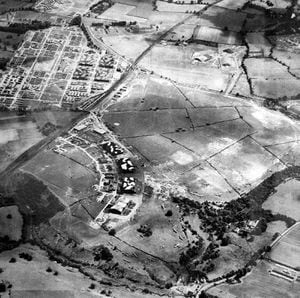
"As children of RAF civilian and forces personnel, we were permitted to catch the train from Cosford station via the airfield, which was nearer than Albrighton station.
"We cycled along Bowling Green Lane, turning right at the junction of what is now David Austin Roses, to the perimeter gate. From there we rode anti-clockwise around the perimeter road to the station.
"At times when the weather was poor or foggy and we were certain that nothing would be flying, we cut short the journey by cycling directly across the airfield along what was a vague cinder track – the line of the original Worcester Road, truncated at the station when the airfield was built.
"During four years of travel to school via the airfield, there was never any evidence of an additional runway – no scars on the ground, no disruption to the grass, no sign of anything which may have interrupted the line of the old road. However, as far as I can recall, the perimeter road was concrete, and this extends westwards up to and beyond the control tower – a similar route, in parts, to the suggested line of a possible second runway.
"Nevertheless, I find it questionable that another runway could have been built. A grass runway however could be a possibility. There has always recognisably been a shortish runway at Cosford, restricted by the rail line at one end, and Cosford woods and valley at the other end.
"I have happy memories of cycling to school around the perimeter on warm sunny days, the extensive grassland covered by flocks of lapwings."

